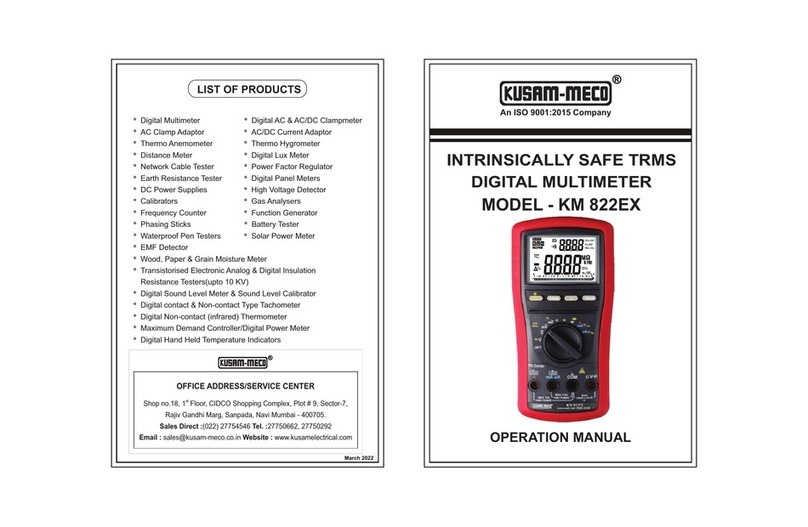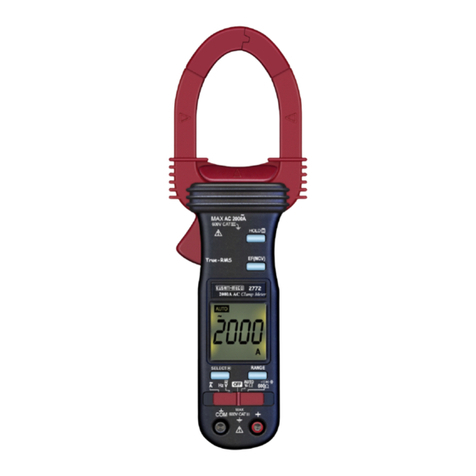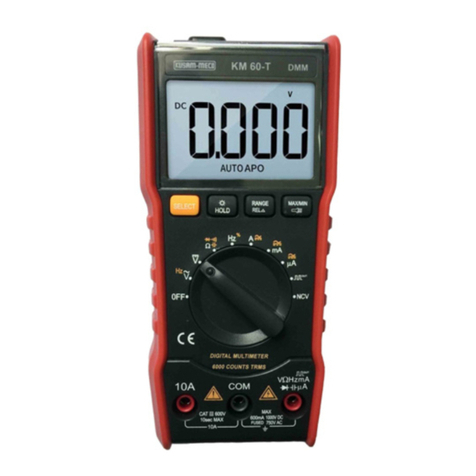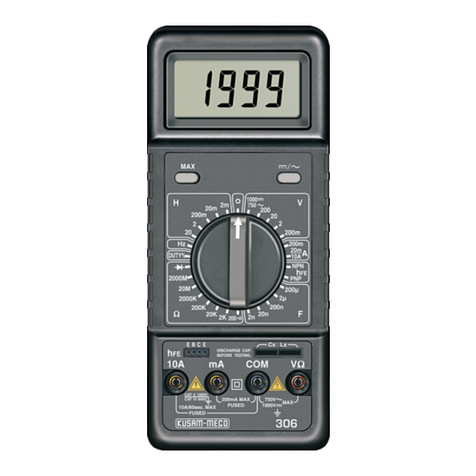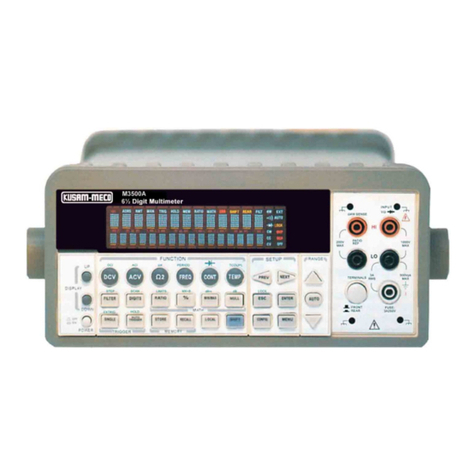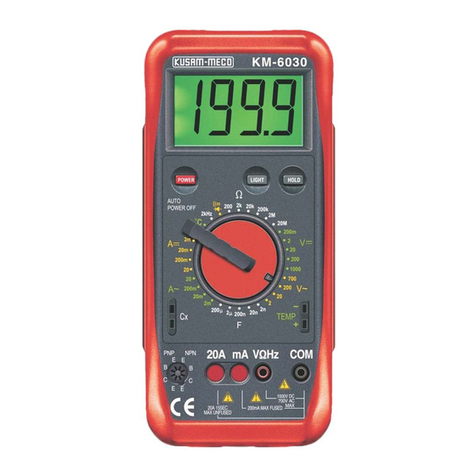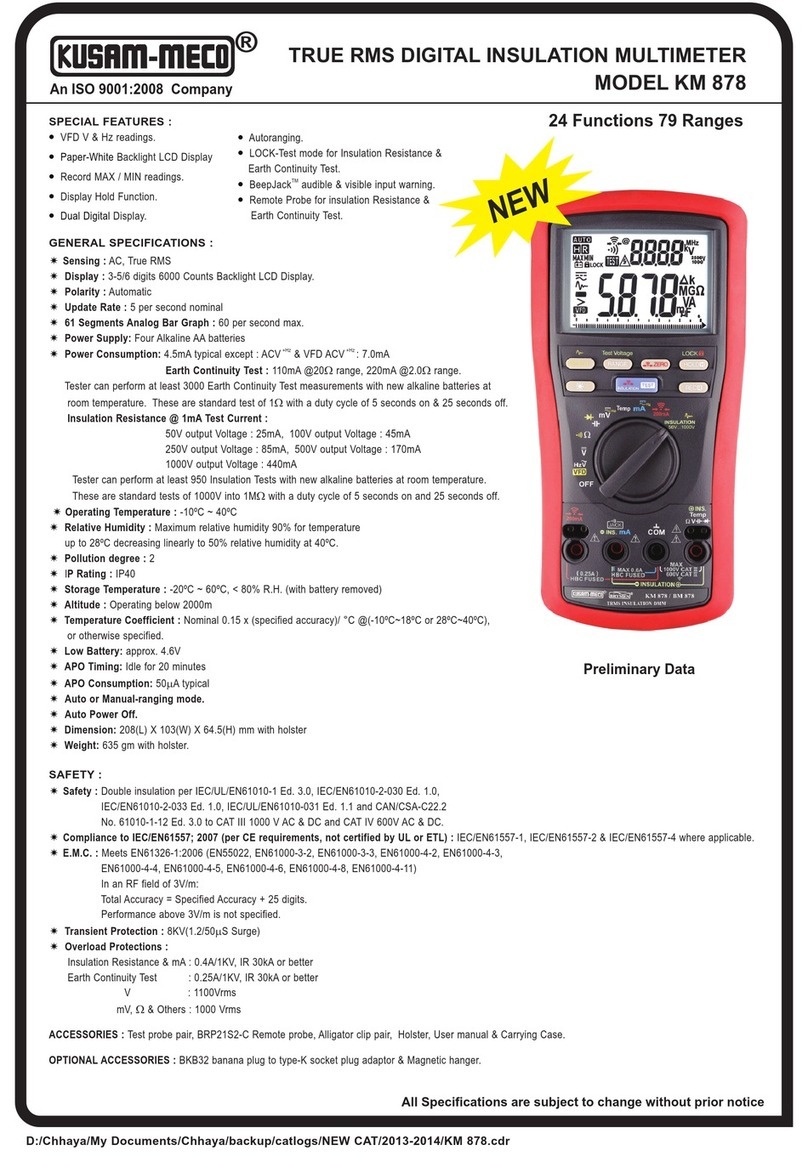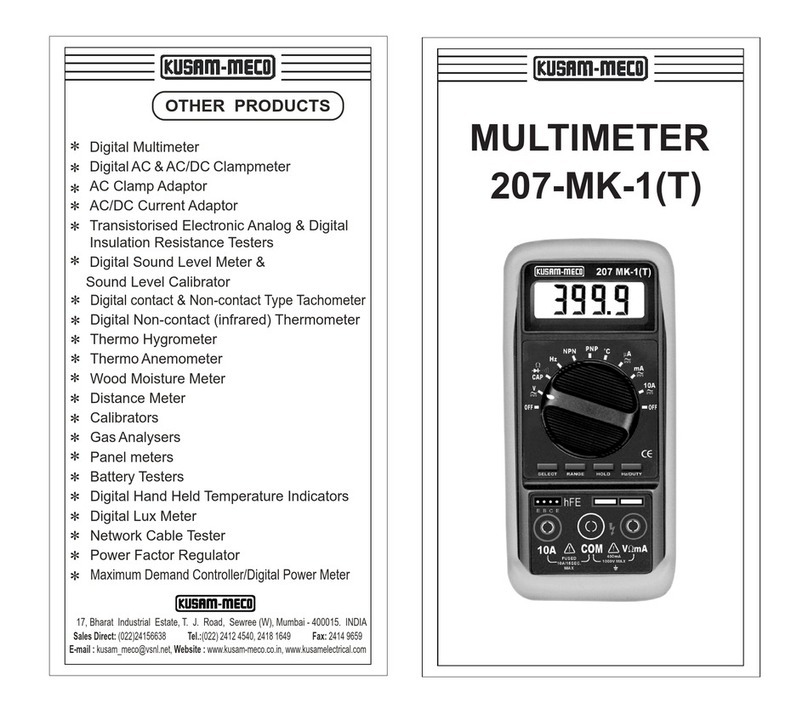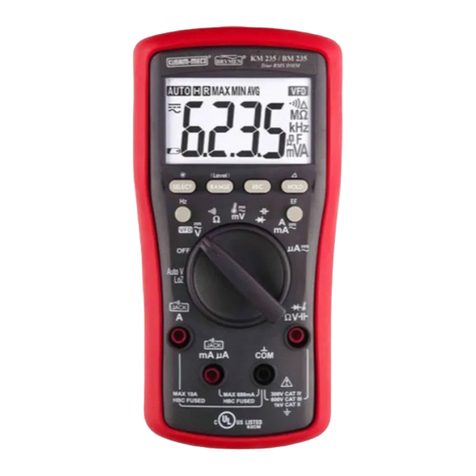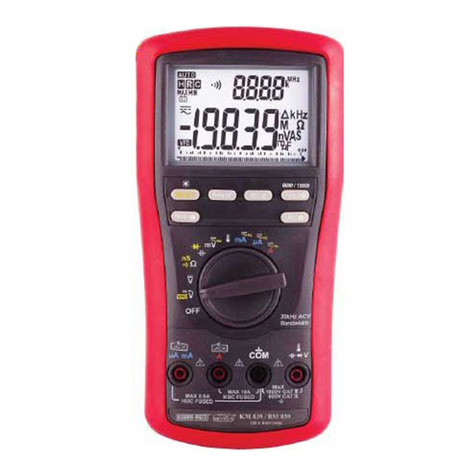- 02-
CAT III :- Three-phase distribution, including single-phase
commercial lighting
=Equipment in fixed installations, such as switchgear and polyphase
motors.
=Bus and feeder in industrial plants.
=Feeders and short branch circuits, distribution panel devices.
=Lighting systems in larger buildings.
=Appliance outlets with short connections to service entrance.
CAT VI :- Three-phase at utility connection, any outdoor conductors
=Refers to the "origin of installation"; i.e., where low-voltage connection
is made to utility power.
=Electricity meters, primary overcurrent protection equipment.
=Outside and service entrance, service drop from pole to building, run
between meter and panel.
=Overhead line to detached building, underground line to well pump
¨When using this Multimeter, the user must observe all normal safety
rules concerning:
protection against the dangers of electric current.
protection of the Multimeter against misuse.
protection your own safety, only use the test probes supplied with the
instrument. Before use, check that they are in good condition.
1.1.2) DURING USE
=If the meter is used near noise generating equipment, be aware that .
display may become unstable or indicate large errors.
=Do not use the meter or test leads if they look damaged.
=Use the meter only as specified in this manual; otherwise, the protection
provided by the meter may be impaired.
=Use extreme caution when working around bare conductors or bus stars
=Do not operate the meter around explosive gas, vapor, or dust.
=Verify a Meter's operation by measuring a known voltage. Do not use the
meter if it operates abnormally. Protection may be impaired. When in
doubt, have the Meter serviced.
=Uses the proper terminals, function, and range for your measurements.
- 03 -
=When the range of the value to be measured is unknown, check that the
range initially set on the multimeter is the highest possible or, wherever
possible, choose the autoranging mode.
=To avoid damages to the instrument, do not exceed the maximum limits
of the input values shown in the technical specifications tables.
=When the multimeter is linked to measurement cirucits, do not touch
unused terminals.
=Caution when working with voltages above 60Vdc or 30Vac rms. Such
voltages pose a shock hazard.
=When using the probes, keep your fingers behind the finger guards
=When making connections, connect the common test lead before
connecting the live test lead; when disconnecting, disconnect the live test
lead before disconnecting the common test lead.
=Before changing functions, disconnect the test leads from the circuit under
test.
=For all dc functions, including manual or auto-ranging, to avoid the risk of
shock due to possible improper reading, verify the presence of any ac
voltages by first using the ac function. Then select a dc voltage range
equal to or greater than the ac range.
=Disconnect circuits power and discharge all high-voltage capacitors before
testing resistance, continuity, diodes, or capacitance.
=Never perform resistance or continuity measurement on live circuits.
=Before measuring current, check the meter's fuse and turn off power to
the circuit before connecting the meter to the circuit.
=In TV repair work, or when carrying out measurement on power switching
circuits, remember that high amplitude voltage pulses at the test points can
damage the multimeter. Use of a TV filter will attenuate any such pulses.

